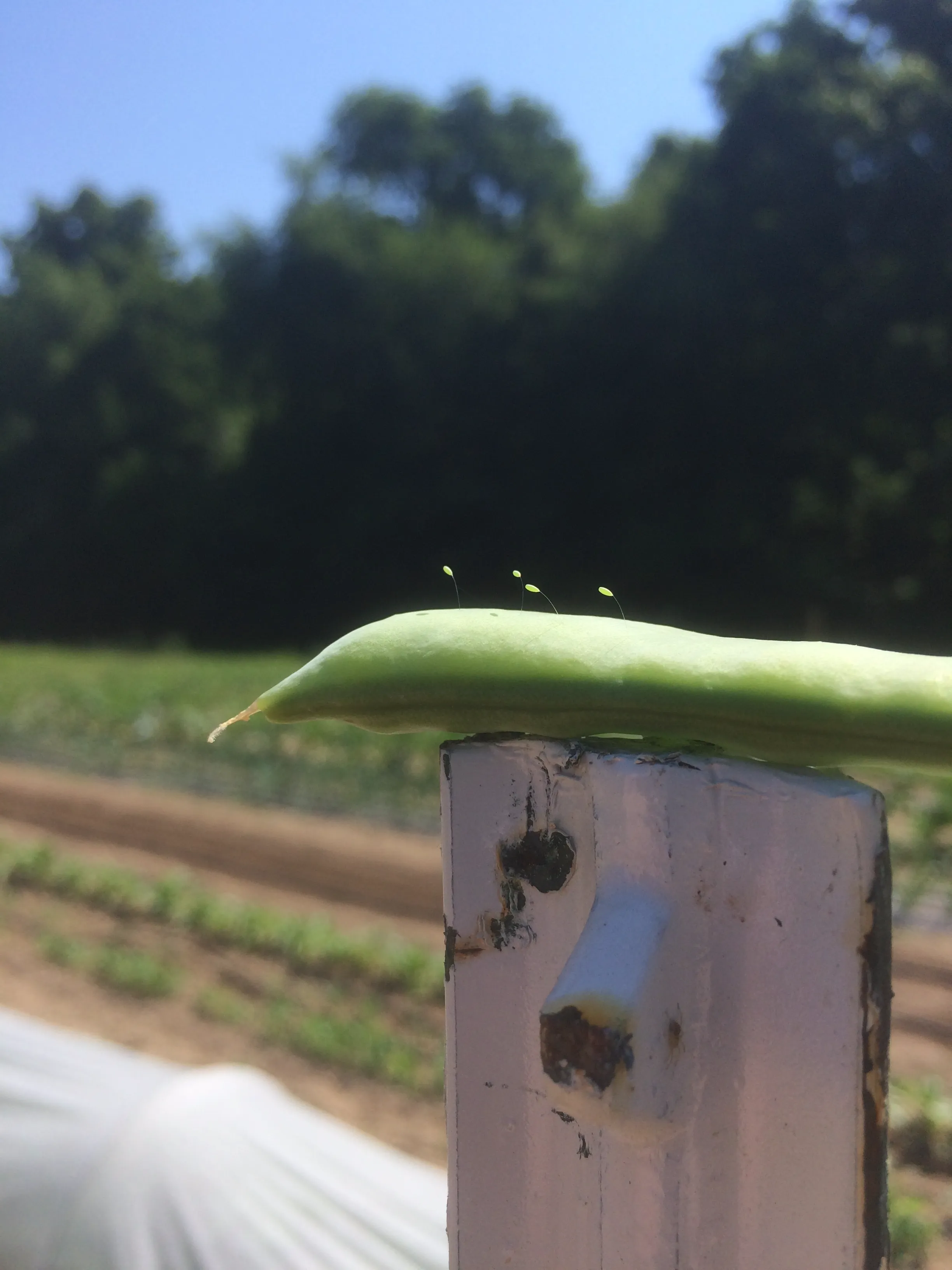Lacewings: Deadly Predators of Crop Pests
Photo Credit to Nicki Morgan, Hart|Beet
Farm
In a previous post we took a closer look at lady beetles and all of the services they have to offer. Like lady beetles, common or green lacewings are highly beneficial in organic farming systems, and are present in nearly all crop-producing regions of North America. With an insatiable appetite for soft-bodied insects from aphids to whiteflies and a massive set of mandibles, lacewing larvae have earned the name “aphid lions” or “aphid wolves”. Adults can serve as pollinators.
IDENTIFICATION
Adult common lacewings are a luminous bright green with large metallic golden eyes. Their wings are
translucent and iridescent, with a lacy veined pattern. (Lacewings are part of the Neuroptera, or
“nerve wing” order.) There are also brown lacewings, though these are far less common. Adults are
either nocturnal or crepuscular, and are therefore more likely to be observed in early morning or
dusk hours than in the mid-day. Larvae
are usually brown with spiny bristles and large
mandibles, and are either humpbacked or plump in shape, with tapered ends. Like lady beetle
larvae, aphid lions are also sometimes compared to tiny alligators in appearance. They are also
known to camouflage themselves by placing the dried remains of their prey or
other materials onto the spines of their back. While you’re probably better off identifying
them in their adult or larval stages, eggs—while very small—are distinctive. Being laid singly and
at the end of a long
stalk, much like a balloon, eggs (once spotted) are easy to identify.
DIET
In their larval stages, lacewings are voracious and indiscriminate predators, consuming most
soft-bodied insects including mites, aphids, beetle larvae, small caterpillars and eggs of a variety
of species, thrips and immature whiteflies. Adults feed on pollen and nectar from flowers, and may
also supplement their diet with honeydew from aphids. Some species will also consume live prey in
their adult stages.

Photo Credit to Nicki Morgan, Hart|Beet
Farm
LIFE CYCLE
Eggs are usually deposited at night, on the undersides of leaves, and near a concentrated food
source (ie: aphid or scale infestation). Eggs are deposited singly or in small groups to ensure an
adequate supply of food and to avoid cannibalism. One adult can lay up to around 200 eggs. Larvae
feed for 2-3 weeks, with a single larvae capable of consuming up to 200 individual prey per day,
before retreating into a rounded white cocoon to metamorphose. Adults emerge in around 5 days.
HABITAT
Adults feed on nectar and pollen, primarily from flowering plants in the Asteraceae and Apiaceae
families. Asters, angelica, caraway, coriander, cosmos, dill, dandelions, Queen Ann’s lace,
sunflowers and yarrow all provide a good source of food and shelter. For the larvae, you need only
provide an insect infestation buffet. Lacewings overwinter in either in cocoons or as adults, but
are susceptible to very wet, cold conditions. Lacewing shelters are easily created by either rolling
a tube of corrugated cardboard inside a plastic bottle (see
page two), or making a lacewing house stuffed with wheat straw, with the opening facing in
the opposite direction of winter winds.
CHALLENGES AND COMMERCIAL USE
Lacewings are commercially available, and are “among
the most commonly released predators”. Garden
Insects (a nice resource for biological pest control) suggests roughly 5,000 eggs per acre as a
general release recommendation, though higher rates may be necessary, and suggests successive
releases over a number of weeks. The site also adds that lacewings “are extremely effective under
certain conditions, especially in protected or enclosed areas such as a greenhouse, but they may
fail to survive and provide control when conditions are not favorable”.
Populations of these natural enemies, much like the pests they help control, can be significantly
diminished by the use of pesticides and herbicides. Purdue
University’s Department of Entomology recommends avoiding or minimizing the use of
broad-spectrum control agents, and maintaining “ground covers, standing crops, and crop residues to
supply overwintering sites for natural enemies”.
For more on shelters for lacewings and other beneficials, see Natural
and Artificial Shelter to Enhance Arthropod Biological Control Agents by the aptly-named Beane
and Bugg. The book Enhancing
Biological Control: Habitat Management to Promote Natural Enemies of Agricultural Pests is a
rich resource of collected articles, parts of which can also be found online.
For more on natural enemies of crop pests in sustainable farming systems, including tachinid and
syrphid flies, minute
pirate bugs and more, the University of California Agricultural and Natural Resources is a
wealth of information, offering up this helpful gallery
and a link to the Natural
Enemies Handbook. Oregon State University extension has put together a nice pocket
guide to common natural enemies, with brief descriptions; look-alikes; and lots of
photos.
If you liked this article, and want to see more like it, enter your email in the subscribe box to the top-right of this page and we'll send you new blog articles as we publish them.

After graduating from UCSC's
Center for Agroecology and Sustainable Food Systems, Lauren Alexandra Kaplan spent a season at
an organic CSA farm in California before returning east to farm in the Hudson Valley. Prior to
pursuing farming full time, she worked in book publishing and helped to launch an urban farm in
NYC. Alexandra is an avid salsa dancer and maker of jams, pickles, and kraut.